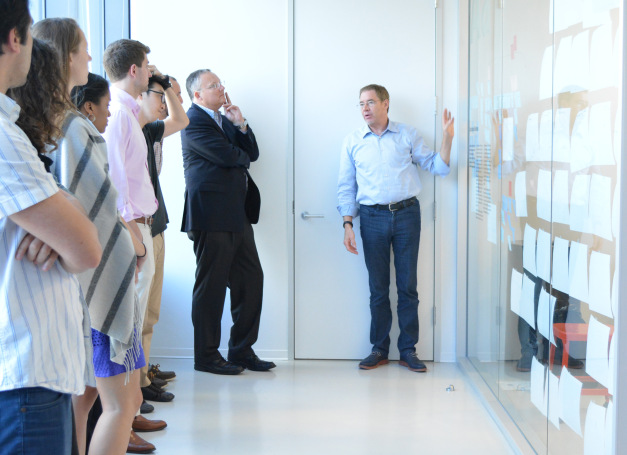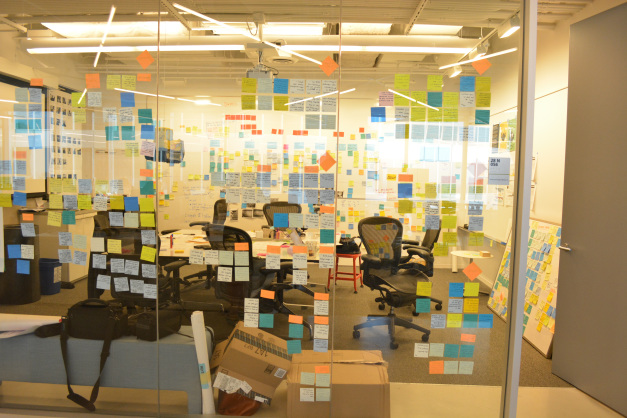Discovering the Many Faces of Innovation

Did you know that Candy Crush brings in almost $1 million in revenue every single day? By comparison, Angry Birds earns $10,000 per day. Angry Birds innovated from a product perspective, but Candy Crush pushed all the right buttons to drive customer behavior in its favor.
Also, did you know that Uber’s business model is not product innovation? Uber’s fee-based model has been used by transportation and logistics companies like Maersk since the 1960s. Uber innovated by integrating existing elements into one seamless ‘ecosystem’ – it created a platform where independent drivers could communicate directly with customers on the street. And it made this platform available in each person’s pocket.
These are just a few of the interesting insights learned from Doblin co-founder Larry Keeley during a class visit to the global innovation firm’s Chicago offices. Keeley also teaches Innovation Frontiers, a core course in Kellogg’s MMM program.
The topic that afternoon was, quite simply, a crash course on what innovation looks, feels, tastes, smells and sounds like.
While most people think of innovation as mostly product-focused, Keeley used the above examples to discuss a 10-part innovation model that Doblin has developed. Product-focused innovation is a disruptive change, often resulting from a radical shift in technology that involves patenting a new product. Product innovations are easily ‘copiable,’ though, and often at a lower price point.
Keeley emphasized that successes like Uber were drawn out of multi-part innovations – disruptive changes that touch multiple components of the 10-part innovation model that result in the formation of a new ecosystem. For instance, consider the first ever Ford car. While it was a definitely an example of product innovation, positive cash flows continued to be a problem until Henry Ford launched channel and profit model innovations by selling to car dealers instead of directly to customers.
Interested in where this is going? We were too.

After learning how multi-faceted innovation could be, we split up into teams to ‘get our feet wet’ by designing an innovative new product or service, while at the same time thinking about more than just the actual product.
I guess we were all quite inspired by the session, because after 20 minutes the room came up with five amazing, yet viable, game-changing ideas. My team was quite jazzed up by the whole process, and we are even thinking of taking things a step further on our idea (which integrates philanthropy and retail to help donators feel more connected to those whose lives they are changing – that’s all I’m saying for now!).
The visit ended with a tour of Doblin’s offices. It’s interesting how Doblin has subverted the typical office set-up with a few rooms to facilitate teamwork and hotelling desks called “home bases” that encourage directors to sit next to consultants. They also have micro-kitchens (a la Google) with a delicious range of coffee. Another interesting feature is the main room in which they have client meetings – all furniture is on wheels making it easy to change the set-up of the room, and the room is partitioned into three sections by curtains to walk clients through Doblin-created solutions.

All in all, our visit was eye-opening. Through the innovation process, I learned more about my fellow classmates and what they are passionate about. Personally I learned the importance of taking a different approach to innovation, a critical component of several courses, projects and activities that we will do as MMM students over the next two years.
Learn more about Kellogg’s MMM program.
Ahalya Vijay is a first-year student in the MMM program at Kellogg. Prior to Kellogg, she did education consulting work with the South African government and technology/operations consulting across the US and Canada.
